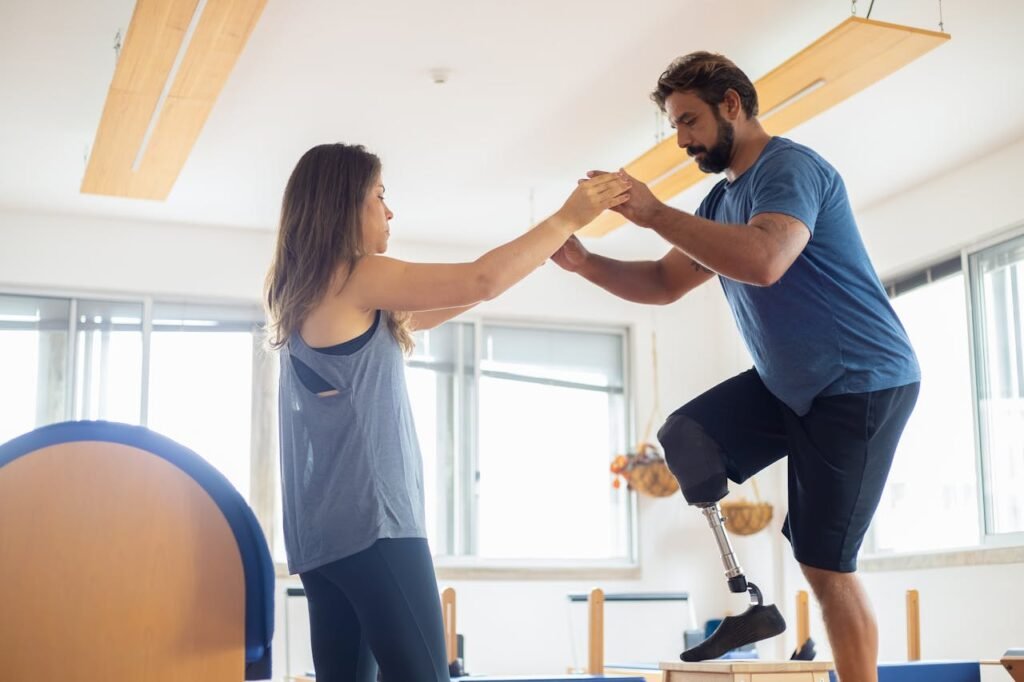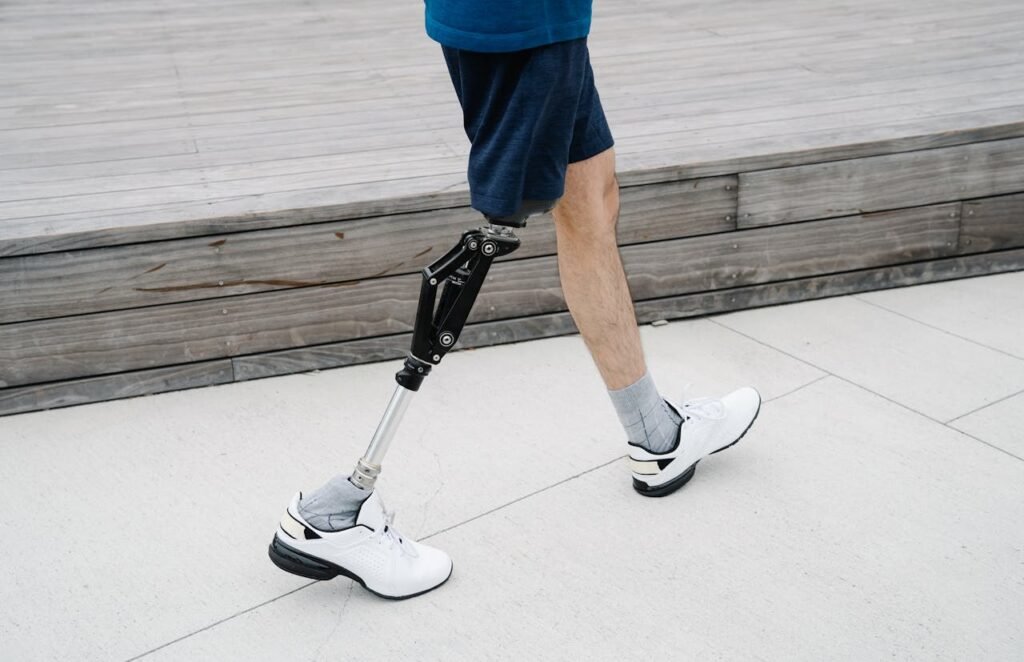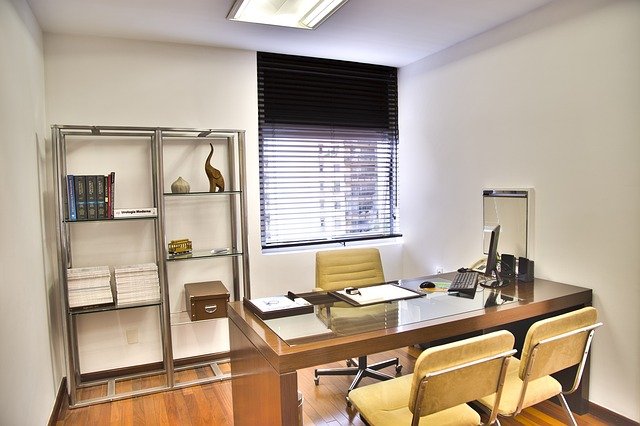A trial fitting is a very important day in the journey of getting a prosthesis. It is the first time you experience how the device feels on your body, how it supports your limb, and how it responds to your movement. But comfort and function are not the only things that matter. Hygiene and safety play an equally important role in making sure the process is smooth and free from problems.
When hygiene protocols are followed, the skin stays healthy, infections are avoided, and the device remains clean and durable. When safety steps are respected, the fitting process becomes calm, controlled, and free from risks. Together, hygiene and safety protect both the user and the clinical team.
At RoboBionics, we take these two factors very seriously. They guide every step of the trial fitting, from preparing the room and sanitizing tools to teaching users how to check their skin after practice. The goal is simple: to give you a safe, clean, and comfortable experience that builds trust and confidence for the final device.
Why Hygiene Matters During Trial Fittings
Protecting the skin

The skin on a residual limb is sensitive. It often bears more pressure and friction than other parts of the body.
If hygiene is ignored, small cuts or rashes can quickly become painful infections.
During a trial fit, where a socket is worn and tested, keeping the skin clean reduces these risks.
Keeping the device safe
Prosthetic sockets and liners come into close contact with skin. Sweat, oils, and dirt can easily build up inside.
If they are not cleaned properly, the device may smell, wear out faster, or even damage the skin.
Good hygiene ensures that the trial device remains safe and reliable for repeated use.
Reducing cross-contamination
Trial fittings often involve multiple people—users, clinicians, and sometimes family members in the room.
If surfaces and tools are not sanitized, bacteria can spread from one person to another.
Strict hygiene rules stop this chain and keep the environment safe for everyone.
How Clinics Prepare for a Trial Fit
Preparing the environment
Before each session, the room is cleaned and surfaces are wiped with disinfectants.
The chair, table, and tools are sanitized so that no residue from the previous session remains.
A fresh, tidy room also helps users feel calm and welcomed.
Sanitizing the equipment
Every socket, liner, and test component used in the trial is cleaned before and after use.
Clinicians use medical-grade cleaning solutions to make sure bacteria and fungi are removed.
This step is repeated even if the device looks clean, because invisible germs can still cause harm.
Protective clothing for staff
Clinicians wear clean gloves while handling the socket and while touching the user’s limb.
In some cases, masks or gowns may also be used, especially if the user’s skin is very sensitive.
These measures protect both the staff and the user from unwanted exposure.
Safety Protocols in the Fitting Room
Clear communication
The most important safety rule is clear, calm communication.
The clinician explains every step before touching the limb or adjusting the socket.
This prevents surprise, reduces anxiety, and helps the user feel in control.
Step-by-step fitting
The trial socket is fitted slowly, with breaks in between.
The clinician checks whether the user feels any pain, tightness, or pressure.
No force is applied, and the process is paused if the user feels uncomfortable.
Monitoring during activities
When the user tries tasks like holding a cup or lifting a bag, the clinician observes closely.
The goal is to make sure the socket stays stable and does not cause strain.
If there is any sign of slipping, redness, or fatigue, adjustments are made right away.
Skin Care Before and After Fitting
Preparing the limb
Before the session, the user is asked to wash the limb with mild soap and water.
Heavy lotions or oils are avoided, since they can make the skin slippery and sensors unstable.
A clean, dry limb is the best starting point for a safe trial fit.
Checking for irritation
After the socket is removed, the skin is checked for redness, swelling, or marks.
A little pinkness is normal, but deep red spots or pain are warning signs.
These are noted so that the socket can be adjusted before the next attempt.
Post-session cleaning
Once the session is complete, the limb should again be washed gently.
Any sweat, dust, or residue is removed to prevent irritation.
If needed, a mild moisturizer can be applied after the skin has fully dried.
Hygiene Habits for Users
Daily cleaning routine
Users are taught how to clean liners and sockets at home.
This includes wiping with disinfectant and letting the parts air-dry completely.
A daily habit keeps both skin and device in good condition.
Care during hot weather
Sweating is common in India’s climate, especially during summer.
In such cases, changing liners more often and using breathable covers can help.
Good ventilation and regular breaks reduce moisture build-up inside the socket.
Recognizing warning signs
If the skin feels itchy, develops rashes, or has a foul odor, it may be a sign of poor hygiene.
Users are encouraged to report these signs immediately rather than waiting.
Early action keeps small problems from becoming serious.
Infection Prevention During Trial Fittings
Why infection control is so important

When someone comes for a trial fitting, their skin is directly exposed to new materials. The inner surface of a test socket touches delicate areas that may already have scars or thinner skin. Even a small break in cleanliness can lead to irritation or infection. For a first-time user, this can create fear or mistrust toward the device. That is why infection control is never an option—it is a core requirement.
Infections do not just affect the skin; they can affect confidence too. If the child or adult associates pain or discomfort with the fitting process, they may hesitate to use the device later. Keeping everything clean ensures that the fitting session feels safe, gentle, and welcoming.
Cleaning tools and surfaces
Before a user enters the room, the clinic staff prepares the entire space. Every surface, from the table where the device rests to the chair where the user sits, is wiped with medical disinfectants. This step may look simple, but it removes germs that could spread from one person to another.
All the tools used during the fitting, such as measurement tapes, scanning devices, or adjustment instruments, are sterilized after each session. Even if the tools appear clean to the eye, invisible bacteria may remain. Clinicians repeat this step every time to maintain trust and safety.
Fresh liners and covers
Trial fittings require direct contact between the skin and the device. To prevent cross-contamination, fresh liners or protective covers are used for each user. If the clinic provides reusable liners, they are washed, disinfected, and fully dried before another session. Parents of pediatric users often feel reassured when they see this step, as it shows respect for their child’s health.
Protecting sensitive skin
Some users, especially children, may have very delicate or scarred skin. In these cases, extra steps are taken. Hypoallergenic liners are chosen, and the socket is lined with soft padding to prevent friction burns. The clinician also explains to parents how to continue protecting the skin at home, since good hygiene practices do not stop once the trial is over.
Safe Handling of Equipment
The role of the clinician
During a trial fit, clinicians are not just guiding movement but also managing safety at every stage. They wear clean gloves when handling the socket and sanitize their hands before and after touching the limb. This ensures that nothing harmful passes from the staff’s hands to the user’s skin.
If adjustments are needed, tools are placed on a sterile tray and not directly on shared surfaces. Even the way components are passed and handled follows a clean method, because a single careless step could compromise hygiene. Parents watching the process often notice these details and feel more confident in the clinic’s professionalism.
Maintaining the socket
The test socket is the most important part of the trial. It must be inspected for cracks, rough edges, or leftover adhesive before being fitted. If a sharp edge is missed, it could cut the skin and cause long-term discomfort. After each use, the socket is cleaned both inside and outside, ensuring no residue remains.
The material of the socket also matters. Clear trial sockets are often made of strong plastics that allow clinicians to see how the limb sits inside. These materials are easy to disinfect and resistant to stains. Choosing the right material adds another layer of safety for the user.
Electrical and battery components
When the trial involves a myoelectric device, additional safety steps come into play. The sensors, wires, and battery packs are tested before being used with the child or adult. All exposed parts are wiped with alcohol-based wipes to prevent contamination. The clinician also explains to the family how to handle charging safely at home, such as keeping chargers away from wet surfaces.
User Safety Tips at Home After a Trial Fit
Cleaning after practice
When the trial session is done, the user often takes the device home for further practice. This is where home hygiene becomes crucial. The socket should be wiped daily with a damp cloth and a mild disinfectant. Liners must be washed with mild soap, rinsed thoroughly, and allowed to dry in open air. Parents should be taught that skipping even one cleaning can cause sweat and dirt to collect inside, leading to irritation.
Protecting against heat and sweat
India’s hot climate makes sweating a constant challenge for prosthetic users. Parents can help children by encouraging short breaks during practice, allowing the skin to breathe. Light cotton sleeves can absorb sweat, and breathable liners are recommended. If sweat is not managed, the warm and damp environment inside the socket can quickly cause rashes.
Regular skin checks
Parents are encouraged to check the child’s limb every night. A mirror can help inspect areas that are hard to see. If red marks disappear within a few minutes, it usually means the pressure is safe. But if the redness stays for longer, or if blisters or cuts appear, it is a warning sign that should be reported to the clinic immediately.
Handling the device carefully
Users, especially children, should be taught to place the device on a clean cloth or tray when not in use. This keeps it away from dust and dirt. The device should not be shared with others, even out of curiosity, because every socket is designed for one person’s unique limb shape. Teaching children these habits early helps them grow responsible and confident in their care routines.
The Role of Families in Maintaining Hygiene
Parents as role models
Children learn by watching. If parents treat the prosthesis with care, the child is more likely to follow. Parents should demonstrate cleaning routines, explain why they are important, and encourage the child to participate in simple steps like wiping the liner. These habits make the child feel responsible and proud.
Siblings and peer involvement
Siblings often want to help. They can be encouraged to remind the user about hygiene in a positive way, such as saying, “Did you clean your helper hand today?” When hygiene is treated as teamwork, the child does not see it as a boring chore but as a normal part of life.
Creating a clean practice space
The area where the child practices with their prosthesis should be kept clean and clutter-free. Mats can be used on the floor to prevent the device from touching dirty surfaces. Parents can also keep a small hygiene kit nearby with wipes, towels, and a spare liner. This preparation reduces stress when accidents or spills happen during practice.
Emotional reassurance
Maintaining hygiene is not only about physical care but also about emotional support. If a child feels overwhelmed by constant cleaning or checking, parents should reassure them that these routines are for their comfort, not punishment. Linking hygiene to safety and independence helps children accept it as a natural part of their journey.
Safety During Functional Tasks
Why safety checks are needed
During a trial fit, it is not enough to simply wear the socket and check the fit while sitting. The real test comes when the user begins to perform functional tasks—like holding a cup, lifting a small bag, or pressing buttons. These tasks mimic real-life activities, but they also add pressure, movement, and torque to the socket. Without proper safety checks, these tasks can cause slipping, strain, or even falls.
That is why every activity in the fitting room is closely supervised. The clinician watches the angle of the limb, the user’s posture, and the way the socket responds. If anything looks unsafe, the activity is paused immediately, adjustments are made, and only then is the task repeated.
Starting with simple actions
The safest way to introduce functional use is by starting small. A child may first hold a soft toy, then progress to a water bottle, and later try to lift a school bag. Each step builds skill while protecting the skin and muscles from sudden overload. Parents are encouraged to observe carefully so they can continue the same gradual approach at home.
Practicing posture and balance
Using a prosthesis is not just about moving the hand or arm—it affects the whole body. If a child leans too far or compensates with the shoulder, it can lead to back or neck pain. That is why part of the safety protocol includes teaching proper posture. Clinicians may show the child how to sit or stand while practicing, so the body stays aligned and safe.
Common Risks During Trial Fittings
Skin irritation
The most common risk is irritation of the skin, especially in the first few sessions. The limb may develop redness, blisters, or rashes if hygiene steps are missed or if the socket is too tight. To prevent this, clinicians perform frequent skin checks and parents are taught to continue these checks at home.
Device slipping
If the suspension system is not secure, the socket may slip during tasks. This can make the child feel unsafe and can cause accidental dropping of objects. Clinicians test for this risk by asking the user to perform controlled lifts while monitoring stability. If slipping is noticed, adjustments are made on the spot.
Overuse of muscles
Children often get excited when they first try their prosthesis and may use it too much, too quickly. This can cause soreness in the forearm or shoulder. Safety protocols emphasize pacing—taking breaks, resting the muscles, and slowly increasing the duration of practice. Parents play a key role in reminding the child not to overdo it.
Emotional overwhelm
Sometimes, the biggest risk is not physical but emotional. A child may feel anxious or frustrated if tasks feel harder than expected. If this is ignored, the child may reject the device altogether. Safety protocols therefore include emotional check-ins, where the clinician asks the child how they feel and reassures them that learning takes time.
Cultural Considerations in India
Respecting family involvement

In India, families are deeply involved in healthcare decisions. Trial fittings often include parents, grandparents, or even siblings. Safety and hygiene protocols are explained not just to the user but to the whole family. This ensures that everyone understands how to maintain cleanliness and provide emotional support.
Managing hygiene in warm climates
India’s climate brings unique challenges. Heat and humidity can make sweating inside a socket more intense, increasing the risk of rashes. Clinics address this by recommending breathable liners, cotton sleeves, and regular breaks. Families are also taught to dry the limb thoroughly before and after use, as moisture is a common cause of infection.
Handling social curiosity
In Indian communities, children with prostheses may attract curiosity from neighbors or classmates. Families are encouraged to prepare simple explanations so the child feels confident instead of embarrassed. When hygiene and safety are maintained, the device looks and feels like a natural part of life, reducing stigma.
Balancing traditional practices
Some families may want to use home remedies like oils or powders on the limb. While intentions are good, these can sometimes cause more harm than benefit by creating moisture or residue inside the socket. Clinicians gently explain why mild soap and water are better, while still respecting cultural practices. A balanced approach helps families feel included rather than dismissed.
Building Lifelong Hygiene and Safety Habits
Teaching responsibility step by step
For children, hygiene and safety habits must be taught gradually. At first, parents may handle all cleaning and checks. Over time, the child can be given small tasks, like wiping the liner or checking for redness with a mirror. Step by step, they grow into responsible users who can care for themselves with confidence.
Making routines simple and repeatable
The best routines are simple enough to become daily habits. For example, “clean the socket after school, check the skin before bed” is easier to remember than long instructions. When routines are repeated every day, they become automatic, reducing the chance of mistakes.
Encouraging positive reinforcement
Children respond well to praise. When they remember to clean their device or point out a skin mark, parents should celebrate the effort. This positive reinforcement makes hygiene and safety feel rewarding rather than boring. Even small acknowledgments like a smile or a “well done” can keep motivation alive.
Partnering with clinicians
Families are not expected to handle everything alone. Regular follow-ups with the clinic keep the device safe and the child healthy. During these visits, clinicians review hygiene habits, check for safety risks, and suggest improvements. This partnership ensures that good practices are maintained for life.
Advanced Clinic Protocols for Hygiene and Safety
Structured cleaning routines
In a professional clinic, hygiene is not left to chance. Every day begins and ends with a structured cleaning routine. The fitting room is sanitized with medical-grade disinfectants, the floor is kept dust-free, and all surfaces are wiped before any user enters. Even chairs and armrests are cleaned, because germs can spread through unnoticed contact points. These routines make the clinic a safe and trusted space for families.
Device isolation practices
Trial sockets and liners are kept separate for each user. If the same test component needs to be reused, it goes through a full cycle of cleaning, drying, and inspection before being brought back into the fitting room. Clinics often label equipment clearly to avoid mix-ups. Parents watching this process feel reassured that their child’s device is treated with care.
Sensor and electrode hygiene
For myoelectric fittings, electrodes are in direct contact with the skin. These are wiped with alcohol-based solutions before and after each use. If disposable electrode covers are available, they are changed for every session. Proper care prevents skin irritation and ensures signals are not blocked by dirt or sweat.
Air quality and ventilation
In Indian climates, warm and humid air can make a room feel heavy and increase sweating during fittings. Clinics address this by ensuring proper airflow and ventilation. Some use air purifiers to reduce dust and allergens. A clean, cool room not only keeps the user comfortable but also protects sensitive skin from excess moisture.
Preparing for Emergencies
Handling skin reactions
Sometimes, despite all precautions, a child may develop redness, swelling, or pain during the fitting. Clinics are prepared with first-aid kits containing antiseptic wipes, soothing gels, and sterile dressings. If irritation is noticed, the session is paused, and the skin is given time to recover. Parents are shown what steps to take at home if the same problem occurs again.
Managing device malfunctions
Though rare, devices can sometimes fail during a trial. A wire may loosen, or a component may stop responding. Clinics prepare for this by testing every device before use and keeping spare parts ready. If a malfunction happens mid-session, the child is reassured that it is not their fault, and the device is swapped quickly. This keeps confidence high and prevents fear of technology.
Responding to falls or slips
Children may get excited during a trial and attempt movements that challenge their balance. If a fall risk is noticed, clinicians stand close enough to provide support. The floor is kept dry and clear of clutter to reduce slipping hazards. In case of a minor fall, first aid is provided on the spot, and parents are guided on how to watch for any delayed discomfort at home.
Emergency communication with families
Every clinic maintains an updated list of parent contacts and ensures that families know how to reach the team after hours. Parents are encouraged to call if they notice sudden swelling, prolonged redness, or unusual device behavior. This open channel of communication builds trust and ensures that emergencies never feel overwhelming.
Caregiver Training
Involving parents from day one
Parents are not just observers during trial fittings—they are active participants. Clinicians explain every hygiene step clearly, demonstrating how to clean sockets, check skin, and store devices. Parents are invited to practice these routines during the session so they feel confident repeating them at home.
Teaching observation skills
Caregivers learn to watch for early warning signs of problems. For example, a child may wince slightly, avoid certain movements, or scratch the limb repeatedly. These are signals that something needs adjustment. Parents are taught to notice these small details and report them during follow-up visits.
Handling emotional support
Caring for hygiene and safety is not just physical; it is also emotional. Parents are trained to respond with calm encouragement when their child feels frustrated. Instead of scolding or pushing, they are taught to comfort and reframe challenges as learning steps. This emotional training is as important as cleaning routines because it keeps the child motivated.
Involving extended family
In many Indian households, grandparents, uncles, or aunts play a big role in daily care. Clinics extend caregiver training to these family members as well. This ensures that no matter who is helping the child, the hygiene and safety protocols are followed consistently.
Long-Term Impact of Hygiene and Safety Practices
Protecting the skin for years
A child’s skin is more sensitive than an adult’s. If hygiene protocols are ignored, repeated irritation can cause scars, infections, and even long-term damage. By protecting the skin today, families ensure that the child can continue using prosthetic devices comfortably for many years to come.
Building lifelong habits
When children are taught hygiene and safety practices early, they carry these habits into adulthood. A teenager who already knows how to clean a socket and check for redness will not need reminders later. These routines become as natural as brushing teeth, creating independence and responsibility.
Reducing medical costs
Preventing infections and injuries saves families from unnecessary medical expenses. Treating skin problems or replacing damaged devices can be costly. By investing in proper hygiene and safety protocols, families save money and avoid stress in the long run.
Strengthening confidence in prosthetics
The ultimate impact of hygiene and safety is confidence. When a child feels safe, clean, and supported during fittings, they begin to trust the device. Instead of rejecting it, they see it as a helpful partner in daily life. This trust leads to consistent use, stronger skills, and a brighter future.
Advanced Clinic Protocols for Hygiene and Safety
Structured cleaning routines

In a professional clinic, hygiene is not left to chance. Every day begins and ends with a structured cleaning routine. The fitting room is sanitized with medical-grade disinfectants, the floor is kept dust-free, and all surfaces are wiped before any user enters. Even chairs and armrests are cleaned, because germs can spread through unnoticed contact points. These routines make the clinic a safe and trusted space for families.
Device isolation practices
Trial sockets and liners are kept separate for each user. If the same test component needs to be reused, it goes through a full cycle of cleaning, drying, and inspection before being brought back into the fitting room. Clinics often label equipment clearly to avoid mix-ups. Parents watching this process feel reassured that their child’s device is treated with care.
Sensor and electrode hygiene
For myoelectric fittings, electrodes are in direct contact with the skin. These are wiped with alcohol-based solutions before and after each use. If disposable electrode covers are available, they are changed for every session. Proper care prevents skin irritation and ensures signals are not blocked by dirt or sweat.
Air quality and ventilation
In Indian climates, warm and humid air can make a room feel heavy and increase sweating during fittings. Clinics address this by ensuring proper airflow and ventilation. Some use air purifiers to reduce dust and allergens. A clean, cool room not only keeps the user comfortable but also protects sensitive skin from excess moisture.
Preparing for Emergencies
Handling skin reactions
Sometimes, despite all precautions, a child may develop redness, swelling, or pain during the fitting. Clinics are prepared with first-aid kits containing antiseptic wipes, soothing gels, and sterile dressings. If irritation is noticed, the session is paused, and the skin is given time to recover. Parents are shown what steps to take at home if the same problem occurs again.
Managing device malfunctions
Though rare, devices can sometimes fail during a trial. A wire may loosen, or a component may stop responding. Clinics prepare for this by testing every device before use and keeping spare parts ready. If a malfunction happens mid-session, the child is reassured that it is not their fault, and the device is swapped quickly. This keeps confidence high and prevents fear of technology.
Responding to falls or slips
Children may get excited during a trial and attempt movements that challenge their balance. If a fall risk is noticed, clinicians stand close enough to provide support. The floor is kept dry and clear of clutter to reduce slipping hazards. In case of a minor fall, first aid is provided on the spot, and parents are guided on how to watch for any delayed discomfort at home.
Emergency communication with families
Every clinic maintains an updated list of parent contacts and ensures that families know how to reach the team after hours. Parents are encouraged to call if they notice sudden swelling, prolonged redness, or unusual device behavior. This open channel of communication builds trust and ensures that emergencies never feel overwhelming.
Caregiver Training
Involving parents from day one
Parents are not just observers during trial fittings—they are active participants. Clinicians explain every hygiene step clearly, demonstrating how to clean sockets, check skin, and store devices. Parents are invited to practice these routines during the session so they feel confident repeating them at home.
Teaching observation skills
Caregivers learn to watch for early warning signs of problems. For example, a child may wince slightly, avoid certain movements, or scratch the limb repeatedly. These are signals that something needs adjustment. Parents are taught to notice these small details and report them during follow-up visits.
Handling emotional support
Caring for hygiene and safety is not just physical; it is also emotional. Parents are trained to respond with calm encouragement when their child feels frustrated. Instead of scolding or pushing, they are taught to comfort and reframe challenges as learning steps. This emotional training is as important as cleaning routines because it keeps the child motivated.
Involving extended family
In many Indian households, grandparents, uncles, or aunts play a big role in daily care. Clinics extend caregiver training to these family members as well. This ensures that no matter who is helping the child, the hygiene and safety protocols are followed consistently.
Long-Term Impact of Hygiene and Safety Practices
Protecting the skin for years
A child’s skin is more sensitive than an adult’s. If hygiene protocols are ignored, repeated irritation can cause scars, infections, and even long-term damage. By protecting the skin today, families ensure that the child can continue using prosthetic devices comfortably for many years to come.
Building lifelong habits
When children are taught hygiene and safety practices early, they carry these habits into adulthood. A teenager who already knows how to clean a socket and check for redness will not need reminders later. These routines become as natural as brushing teeth, creating independence and responsibility.
Reducing medical costs
Preventing infections and injuries saves families from unnecessary medical expenses. Treating skin problems or replacing damaged devices can be costly. By investing in proper hygiene and safety protocols, families save money and avoid stress in the long run.
Strengthening confidence in prosthetics
The ultimate impact of hygiene and safety is confidence. When a child feels safe, clean, and supported during fittings, they begin to trust the device. Instead of rejecting it, they see it as a helpful partner in daily life. This trust leads to consistent use, stronger skills, and a brighter future.
Daily Routines for Users
Morning preparation
A safe and hygienic day with a prosthesis begins in the morning. Before putting on the device, the user should wash the limb gently with mild soap and lukewarm water. The skin must be dried thoroughly, especially in folds and around scar tissue. Moisture trapped inside a socket can quickly turn into irritation or infection. If a moisturizer is used, it should be applied lightly and allowed to absorb completely before the socket is worn.
The device itself also needs morning care. Liners should be inspected for dirt, cracks, or unusual wear. A quick wipe with a disinfectant cloth removes bacteria that may have collected overnight. By starting the day with clean skin and a clean device, the user reduces almost all common risks.
Midday habits
During school, work, or daily routines, it helps to plan small breaks. Even a two-minute pause to remove the device, wipe the skin, and let it breathe can prevent redness and overheating. For children in hot classrooms or adults in outdoor jobs, these breaks make a huge difference. Families can pack a small hygiene kit with wipes, a towel, and a spare liner so cleanliness remains possible anywhere.
Evening care
At the end of the day, the device should be removed carefully and inspected. The skin must be checked in a mirror for redness, rashes, or swelling. If any mark remains longer than ten minutes, it should be reported to the clinic. Liners should be washed with mild soap, rinsed well, and air-dried away from direct sunlight. The socket itself can be wiped with a clean damp cloth. These steps take only a few minutes but protect both the user and the device for years.
Clinic–Family Partnerships
Shared responsibility

Safe and hygienic use of prosthetics is not the job of the clinic alone, nor the responsibility of the family alone. It is a partnership. The clinic provides technical expertise, medical oversight, and professional adjustments. The family ensures daily care, consistency, and emotional support. When these two roles work together, the child or adult user receives the best possible outcome.
Regular follow-ups
No matter how well a trial fit goes, follow-up visits are essential. Children grow, adults gain or lose weight, and daily use changes how the socket feels. Families should see follow-up appointments not as optional check-ins but as vital safety steps. Each visit gives clinicians a chance to adjust the fit, check skin health, and reinforce hygiene routines.
Open communication
Trust is built on open communication. Families should feel free to share even small concerns—like slight odor inside the socket or mild itching after long use. No detail is too small, because tiny issues often reveal larger problems if ignored. Similarly, clinicians must listen patiently and explain adjustments in simple, reassuring words. This two-way communication keeps confidence high.
Education as empowerment
When families understand the “why” behind hygiene and safety steps, they are more likely to follow them faithfully. Clinics should not just give instructions but explain their importance. For example, instead of saying, “Wash the liner daily,” they might say, “Washing prevents bacteria from growing, which keeps your child’s skin safe.” Knowledge turns routines into meaningful habits.
Safety in School and Community Settings
At school
For children, safety does not stop at home or the clinic. Schools must also become safe spaces. Teachers should be informed about the child’s device, what kind of help may be needed, and what signs to watch for. For instance, if a child suddenly avoids writing or carrying a bag, it may signal discomfort.
Classmates should be educated gently, perhaps with the child’s permission, so they understand that the prosthesis is simply a tool. When curiosity is addressed openly, teasing reduces and acceptance grows. Hygiene kits can be kept in the school bag so that the child can manage small routines independently.
At the playground
Playtime is an important part of childhood. Children should not be stopped from playing, but their activities may need adjustments. Non-slip mats, safe climbing equipment, and softer sports gear make play safer. Teachers and parents can supervise in the beginning, gradually allowing more freedom as the child gains confidence.
In community spaces
In public spaces, safety protocols protect not just the user but also the device. Families should encourage children to avoid sharing their prosthesis with curious peers. They should also carry a small towel to clean sweat or dirt if the device is exposed during travel. Cultural respect is important too—families can explain the prosthesis in simple terms to curious relatives or neighbors, reducing stigma and building awareness.
During travel
When traveling, hygiene and safety can become challenging. Families should prepare by packing a care kit with cleaning supplies, spare liners, and any chargers if the device is myoelectric. Long journeys should include breaks for cleaning and skin checks. Trains, buses, and planes may be crowded, so protective covers can prevent accidental knocks or contamination.
Practical Takeaways
Hygiene is daily, not occasional
Cleanliness is not something to focus on only during clinic visits. It is a daily habit. Families that treat hygiene as part of the normal routine—like brushing teeth or washing hands—see fewer problems and longer device life.
Safety comes from patience
The safest trial fittings are the ones that move slowly. No child or adult is expected to master their device in one day. Patience allows muscles to adapt, skin to adjust, and confidence to grow. Families who focus on steady progress achieve the best long-term results.
Family and clinic must walk together
Neither the clinic nor the family can ensure success alone. It takes teamwork. Families provide the care and love at home, while clinics provide the technical expertise. Together, they create an environment where the prosthesis becomes a trusted partner in daily life.
Confidence grows from comfort
The ultimate goal of hygiene and safety is not just to prevent problems—it is to build confidence. When the user feels clean, safe, and respected, they begin to trust the prosthesis as part of themselves. That trust leads to consistent use, independence, and dignity.
Conclusion
Trial fittings are not just about testing a device; they are about creating a foundation of safety and hygiene that lasts for life. By protecting the skin, keeping the device clean, and following careful safety steps, both children and adults can experience fittings without fear. Families who practice these routines daily and maintain close partnerships with their clinics build not only healthier habits but also stronger confidence.
At RoboBionics, we believe every trial fit should feel safe, clean, and empowering. By combining hygiene, safety, and compassion, we help people move closer to independence with dignity.



